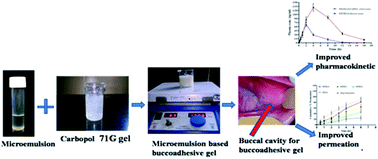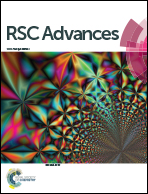Development of an α-linolenic acid containing a soft nanocarrier for oral delivery-part II: buccoadhesive gel
Abstract
The objective of the present research was to develop and characterize a Carbopol 71G (CP 71G) buccoadhesive gel encompassing an optimized simvastatin-loaded microemulsion (MES4) containing α-linolenic acid as an oil phase for buccal delivery. Crosslinking of the gelling agent was done by adjusting the pH with a neutralizing agent triethanolamine (TEA). The formulations, namely, the drug suspension, the MES4, and the microemulsion based buccal gel containing 4% w/v (MEBG4), 5% w/v (MEBG5) and 6% w/v (MEBG6) CP 71G respectively, were optimized on the basis of the permeation flux of simvastatin (SIM), which was found to be in the range of 0.132–0.482 mg cm−2 h−1, calculated from an ex vivo permeation study. The optimized buccal gel (MEBG4) showed a significantly higher (P < 0.001) permeation flux (J = 0.443 ± 0.062 mg cm−2 h−1) compared to the drug suspension (J = 0.132 ± 0.044 mg cm−2 h−1). The permeation enhancement ratio of MEBG4 was found to be 3.36 fold higher than that of the aqueous suspension. The Cmax value (131.208 ± 21.563 ng ml−1) of the buccoadhesive gel (MEBG4) was found to be significantly higher (P < 0.001) when compared to the same dose administered by an oral route (Cmax – 68.513 ± 9.821 ng ml−1). The relative bioavailability (Fr) of the optimized MEBG4 buccal gel was about 385.3% higher than that of the oral marketed tablet. The MEBG4 gel followed the Korsmeyer–Peppas equation implying that the gel showed a diffusion type of drug release, due to polymer relaxation or erosion (Case II transport). The texture profile in terms of spreadability (0.8 mJ), adhesiveness (2.9 g), firmness (11.0 g) and extrudability (35.2 mJ) of MEBG4 was evaluated and showed good spreadability and adhesiveness. A rheological study revealed the pseudoplastic behavior of the gel. In conclusion, a consistent and effective buccoadhesive gel with a SIM-loaded microemulsion and improved buccal permeation and pharmacokinetics parameters was developed successfully.


 Please wait while we load your content...
Please wait while we load your content...